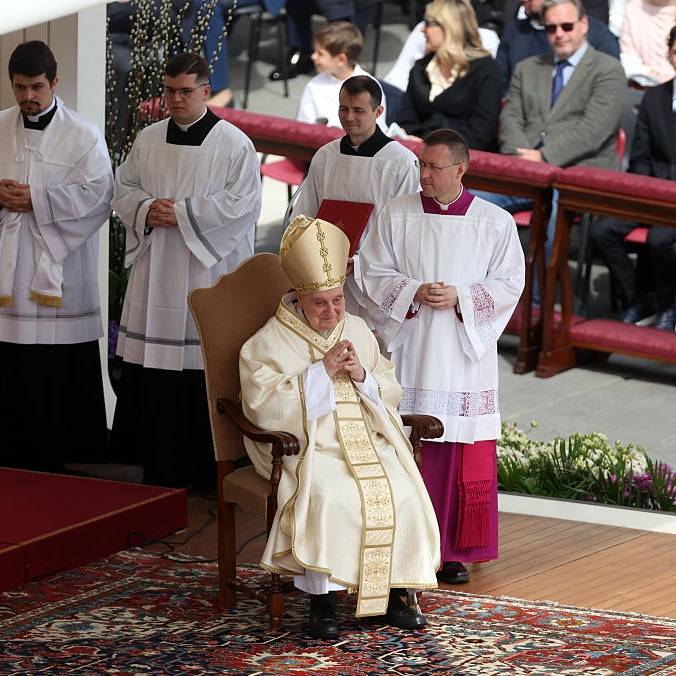
Pope Francis made a public appearance the day before his death. Credit: Marco Iacobucci/SOPA Images/LightRocket via Getty Images

Pope Francis made a public appearance the day before his death. Credit: Marco Iacobucci/SOPA Images/LightRocket via Getty Images
Mourners will be able to pay their respects, but Pope Francis’ funeral will differ from those of past Popes.
Pope Francis died at 7:35 a.m. on Monday, April 21, just hours after his final public appearance.
Cardinal Farrell confirmed his death in a solemn statement.
“Dearest brothers and sisters, with deep sorrow I must announce the death of our Holy Father Francis,” he said.
He added that Francis spent his life serving the Lord and the Church.
He praised the Pope for living the Gospel with courage, love, and devotion to the poor and marginalized.
Jorge Mario Bergoglio, born in 1936, became the first South American pope and served as a bishop in Buenos Aires.
He became the 266th pope in 2013 after Benedict XVI resigned—the first pope to do so in over 600 years.
As the world mourns, funeral preparations are underway, but Pope Francis’ wishes will break with tradition.
BBC News reports he requested a simpler burial.
Unlike past popes buried in cypress, lead, and oak coffins, Francis chose a modest wooden coffin lined with zinc.
He also removed the traditional public viewing platform, the catafalque.
Mourners will instead view his body in an open coffin without a lid.
Francis will also become the first pope in over a century buried outside the Vatican.
His final resting place will be the Basilica of St Mary Major in Rome.
On Easter Sunday, Francis made his final public appearance.
Despite health issues, he was wheeled onto the St Peter’s Basilica balcony and raised his hand to bless the crowd.
“Brothers and sisters, Happy Easter!” he told the cheering worshippers.
An aide read the rest of his Urbi et Orbi blessing.
Francis urged peace for Ukraine and called for a just and lasting resolution to the war.
He also appealed for the release of prisoners of war and political prisoners during this Jubilee year.
That day, the Pope also held a private meeting with U.S. Vice President JD Vance, sharing “good wishes,” according to the Vatican.
He then took one final ride through the crowd.
Riding in his popemobile through St Peter’s Square, he stopped often to bless babies and hand out gifts.
Thousands of followers chanted “Viva il Papa!” — “Long live the Pope.”
Francis had battled declining health for years, including bronchitis, pneumonia, sciatica, and the flu.
On February 14, doctors admitted Pope Francis to the hospital with bronchitis and later diagnosed him with bilateral pneumonia.
Tests showed low blood platelet levels linked to anemia.
On February 22, the Vatican said he was in “critical” condition after a “prolonged respiratory crisis” that required high-flow oxygen.
By the next day, he developed “initial, mild” kidney failure.
He stayed hospitalized for 38 days.
Doctors called his condition “complex” and sometimes life-threatening.
He suffered four breathing crises, the worst on February 28 when he inhaled vomit.
Dr. Sergio Alfieri told Corriere della Sera they faced a tough choice: stop treatment or push forward with every possible drug and therapy.
They chose to keep fighting, despite the risks.
On March 23, Francis left the hospital.
He briefly appeared on Gemelli’s balcony, smiled, gave a thumbs up, and returned to the Vatican.
He was set to begin a two-month recovery after Easter.
Instead, the Catholic Church now mourns his passing.